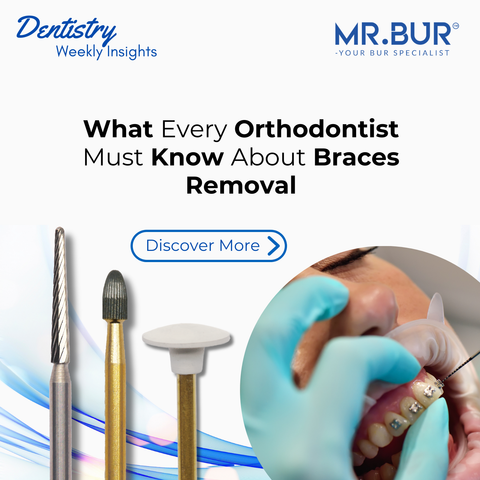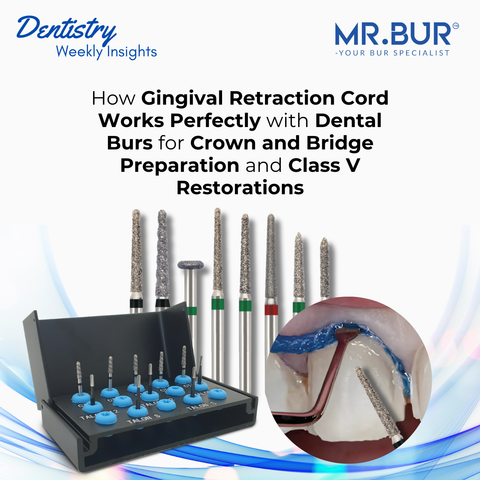The removal of carious lesions is a fundamental part of restorative dentistry that requires precision, skill, and the right tools to ensure the tooth’s integrity is maintained while eliminating all decay. One of the most effective tools in this process is the round diamond bur, known for its ability to provide precise cutting while preserving healthy tooth structure. In this article, we will discuss the techniques involved in removing carious lesions and how round diamond burs enhance the efficiency and accuracy of this procedure.
Understanding Carious Lesions
Carious lesions, also referred to as cavities or tooth decay, are brought on by oral bacteria breaking down tooth enamel. Pain, infection, and even tooth loss may result from these lesions if they are not treated, as they may spread into the tooth's deeper layers. Removing the decaying material and restoring the tooth to its original shape and function are the aims of treating carious lesions.
The Importance of Effective Carious Lesion Removal
Prevents Spread of Decay: Removing carious lesions is essential to stop decay from progressing to deeper layers of the tooth, such as the dentin and pulp, where it can cause more serious complications.
Minimizes Complications: Accurate and conservative removal techniques reduce the risk of further dental issues, such as infection, abscess formation, and the need for more invasive procedures like root canals.
Maintains Tooth Strength: By preserving as much of the healthy tooth structure as possible, this approach helps maintain the tooth's natural strength and function.
Step-by-Step Procedure for Removing Carious Lesions
Step 1: Diagnosing the Lesion
- Use diagnostic tools like intraoral cameras and radiographs to determine the extent and location of the decay.
- Identify all areas of decay to ensure complete removal during the procedure.
Step 2: Isolation of the Tooth
- The tooth is isolated using a rubber dam to maintain a dry working field and prevent contamination from saliva.
- Ensures a clean and controlled environment, reducing the risk of spreading bacteria during the procedure.
Step 3: Initial Access to the Decay
- Using a small head size of Mr. Bur round diamond bur to gain initial access to the decayed area.
- Round diamond burs are ideal for this step due to their precise cutting action, the bur is applied with a light, controlled motion to open the cavity and expose the decay. The diamond grit of the round bur allows for efficient cutting without compromising the surrounding enamel.
Step 4: Removing Decayed Tooth Structure
- Complete removal of all carious tissue using a combination of high-speed and low-speed burs.
- Round Carbide RA burs play a vital role at this stage, particularly in reaching deeper areas of decay without damaging the underlying dentin.
- The dentist uses the round carbide bur to carefully remove all decayed material, shaping the cavity walls to prepare them for filling. Continuous water irrigation during this process helps prevent overheating and maintains patient comfort.
Step 5: Refining the Cavity Preparation
- Smooth the edges and refine the cavity shape to enhance adhesion for restorative materials.
- Fine-grit round diamond burs are used to smooth the internal surfaces of the cavity, ensuring a clean finish.
- Creates a well-defined cavity that allows for a strong bond with the restorative material.
Step 6: Restoration Placement
- Restore the tooth's form, function, and aesthetics while ensuring long-term durability.
Precautions When Using Round Diamond Burs in Carious Lesion Removal
- Use Mr. Bur round diamond burs with precise control to prevent excessive removal of healthy tooth structure. Over-aggressive cutting can damage the enamel or dentin unnecessarily.
- Always use water irrigation during the procedure to manage heat generated by the bur, preventing overheating and protecting the pulp from thermal damage.
- Check the condition of the burs regularly and replace them after using more than 18 slices. Sharp burs ensure efficient cutting and reduce the risk of trauma to surrounding tissues.
- Apply light pressure with the round diamond bur to reduce the risk of tooth damage and improve control over the cutting action.
- Be attentive to the patient's comfort throughout the procedure to detect any signs of sensitivity or discomfort early, which may indicate overheating or excessive pressure.
Conclusion
The removal of carious lesions is a critical procedure that requires precision and the use of the right tools to ensure the best outcomes for the patient. Round diamond burs and Round carbide burs are indispensable in this process, providing superior control, precision, and efficiency. By integrating these burs into their practice, dental professionals can enhance their ability to perform minimally invasive decay removal, ultimately leading to better patient care and long-term dental health.
Working with experts over 50 years of experience in the dental bur industry, MR.BUR AUSTRALIA is dedicated to provide the highest quality dental burs on the market.
Further Reading
- Diamond Dental Burs: Essential Tools for Dentistry
- 8 Incredible Uses of Round Diamond Burs in Modern Dentistry!
- Top 8 Must-Have Diamond Burs for Every Dental Practice
- Top 5 Diamond Bur Types Every Dentist Should Know for Cavity Preparations
Diamond Burs, Carbide Burs, Surgical & Lab Use Burs, Endodontic burs, IPR Kit, Crown Cutting Kit, Gingivectomy Kit, Root Planning Kit, Orthodontic Kit, Composite Polishers, High Speed Burs, Low Speed Burs
Subscribe our newsletter now!





